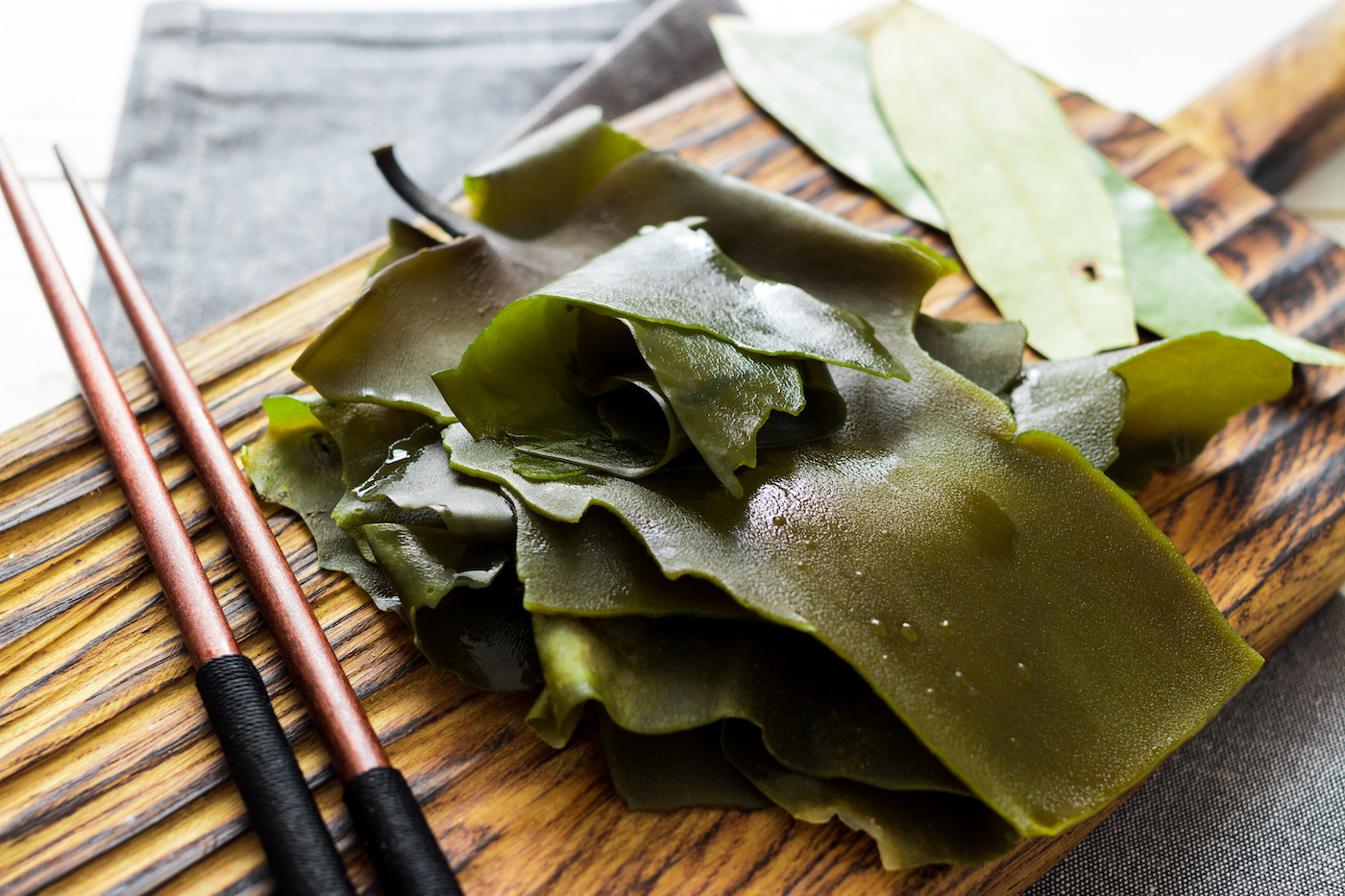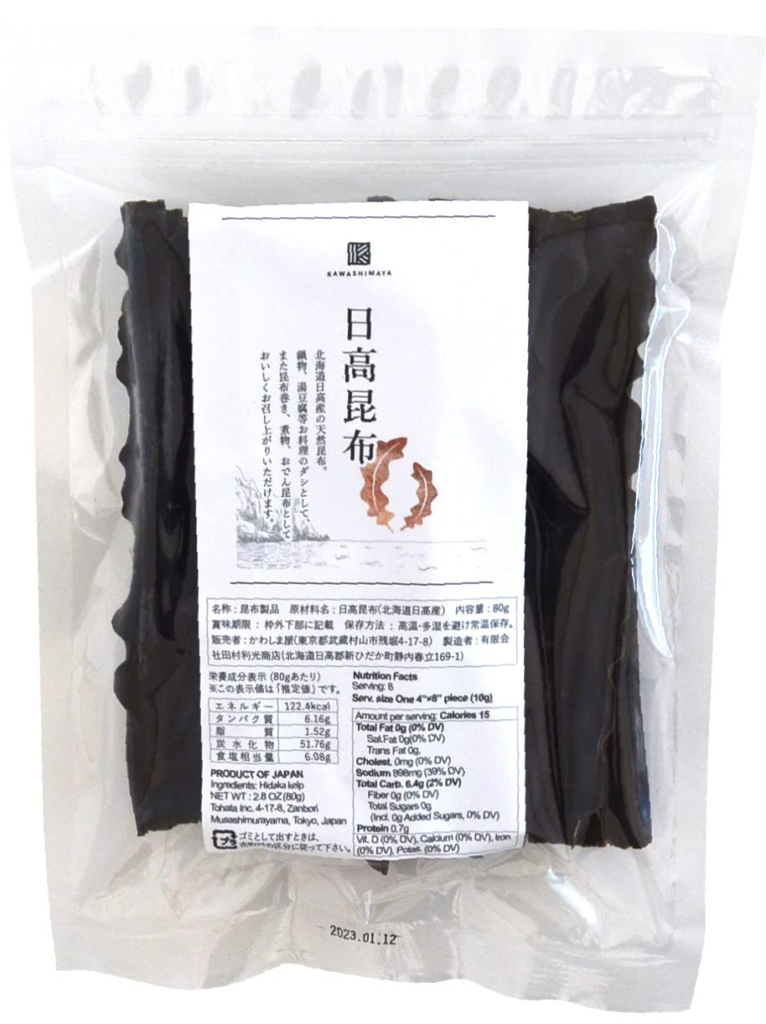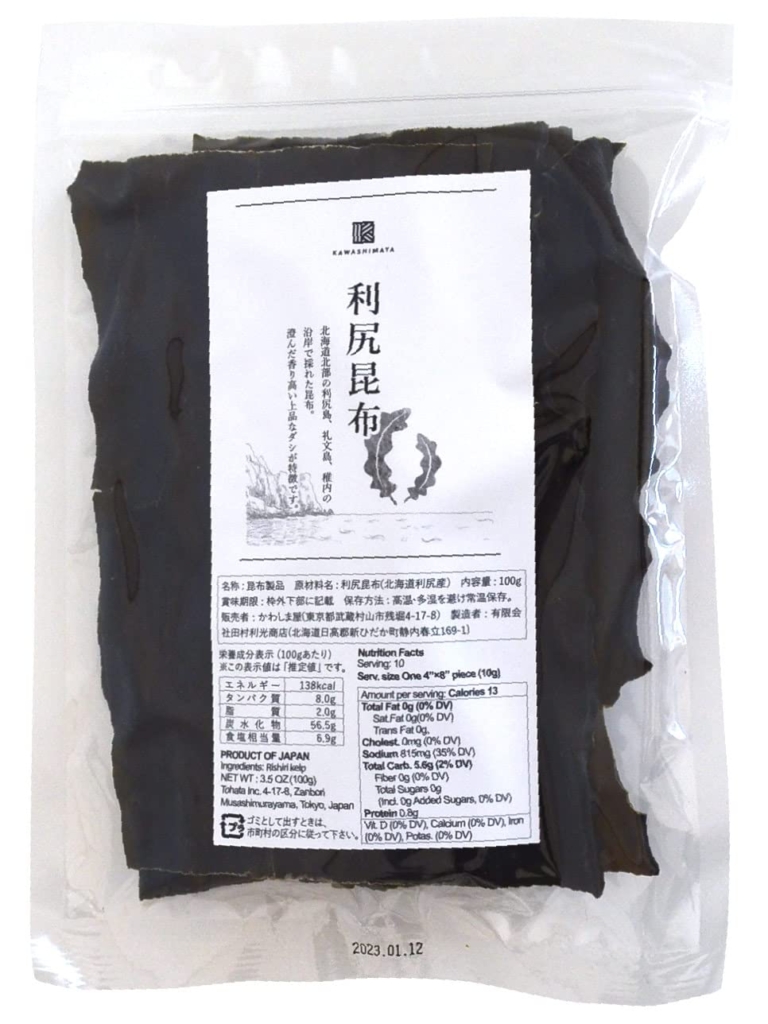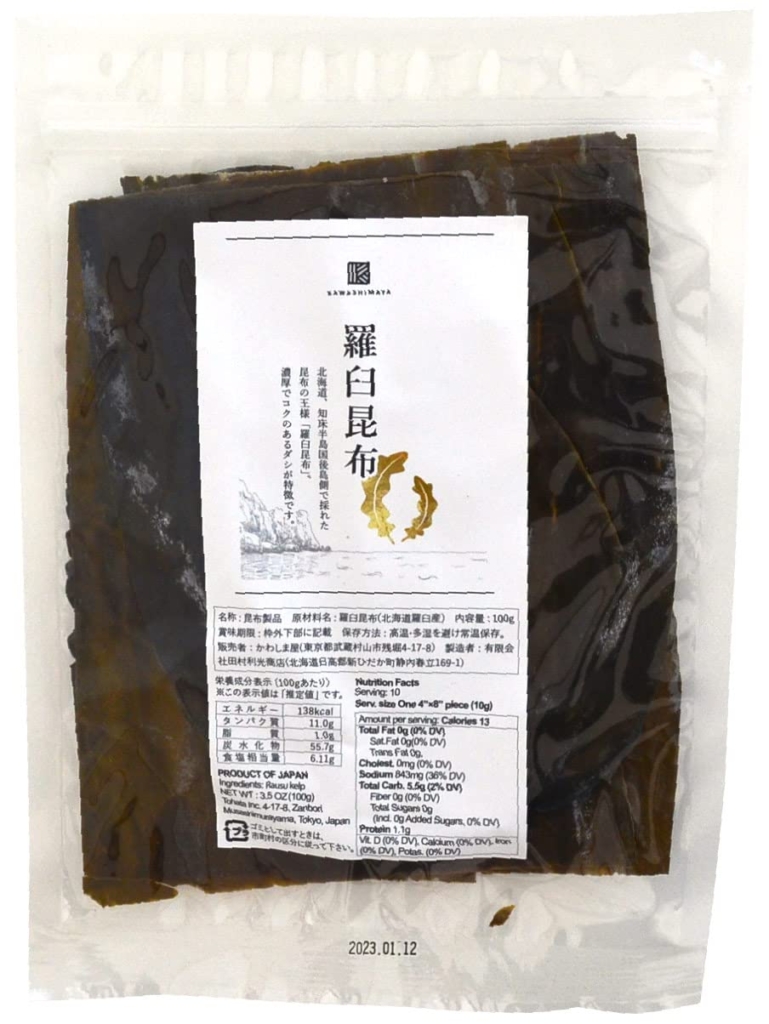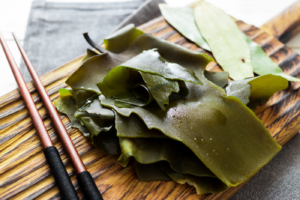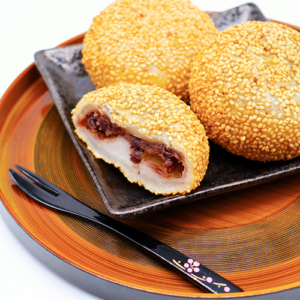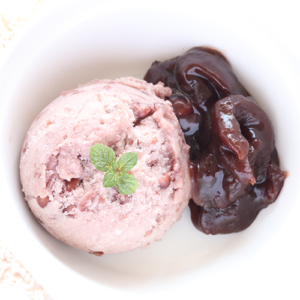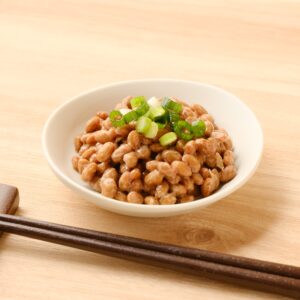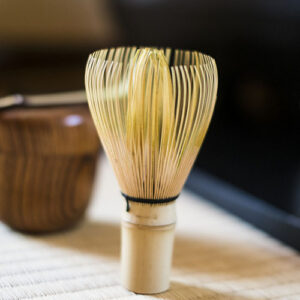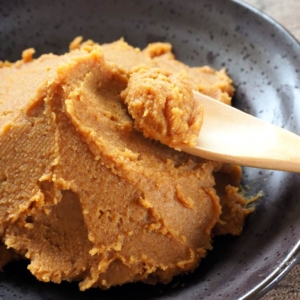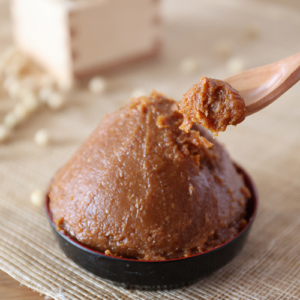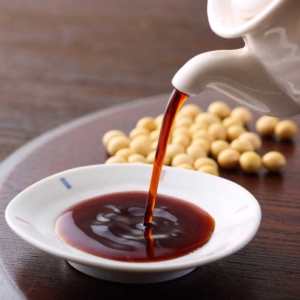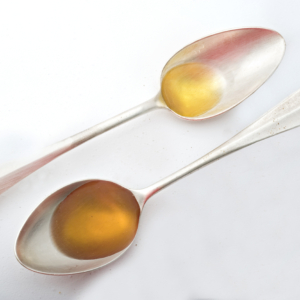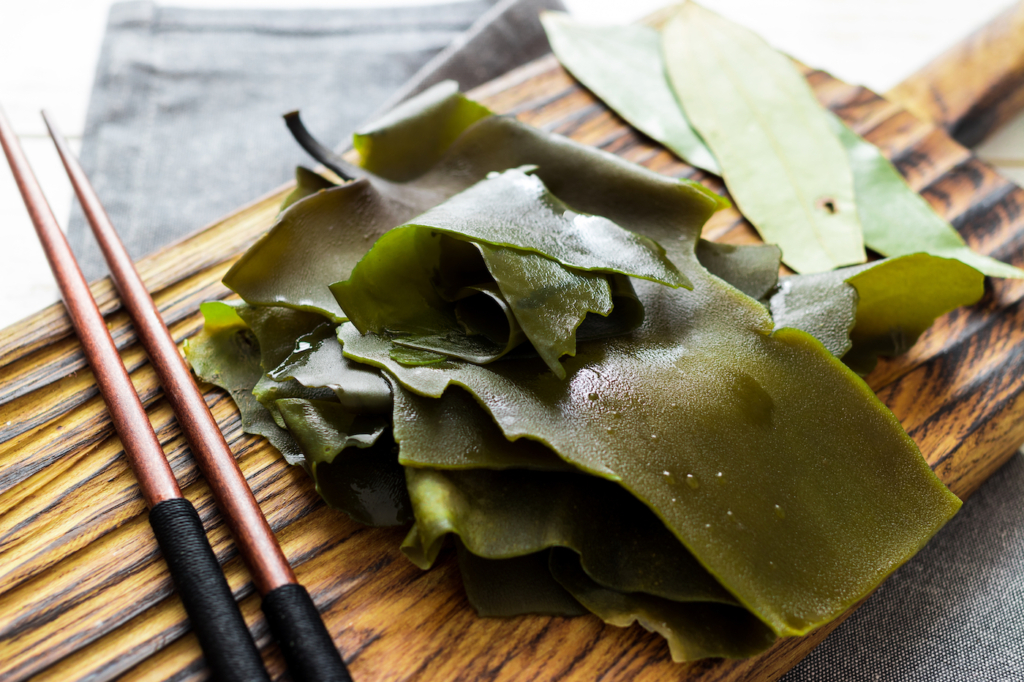
You might have heard of Kombu, a type of Japanese seaweed otherwise known as the “King of Seaweed”. For many Japanese dishes, Kombu is a key ingredient to give it that authentic Japanese taste. In this article, we are going to discuss everything you must know about this magical ingredient!
What is Kombu?
Kombu (Japanese: 昆布) is an edible sea vegetable belonging to the brown algae family. This ingredient is used extensively in Japanese cuisines, especially in soup stock (dashi) and to make simmered seaweed (tsukudani). It contains a lot of glutamic acids, which act as a flavour enhancer and has many health benefits. Due to its richness in nutrients, kombu is recommended and suitable for vegans and people who follow a plant-based diet.
Where does it come from?
90% of the kombu harvested in Japan is found in the sea around the Hokkaido area, in the north of Japan. This area is rich in minerals, providing an ideal environment that produces high-quality and flavourful kombu.
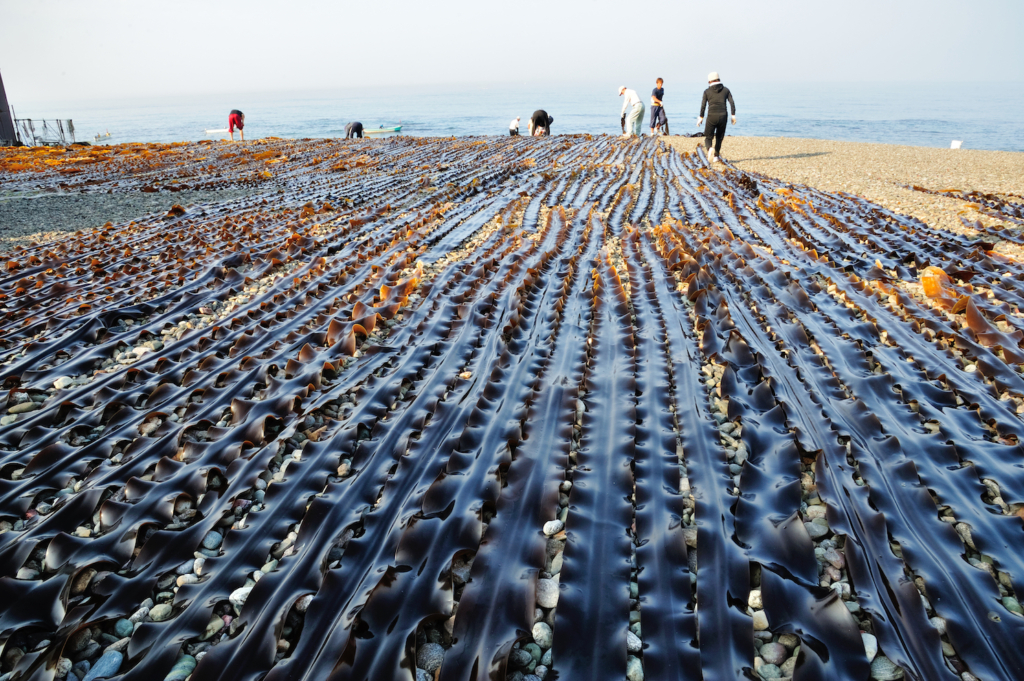
Flavour profile
There are many layers of Kombu, depending on their age. First-year kombu is quite thin hence the taste is not as rich. Second-year kombu is richer in taste, hence more aromatic and has more depth in flavour. They are often harvested from July to September. To make Japanese soup stock (dashi), second-year kombu is often preferred for the best flavour.
Due to its high concentration of glutamic acid, kombu has a umami flavour. The taste is not fishy at all, but more like a mushroom-like flavour. It is definitely very distinctive!
4 Main Types of Kombu
Ma Kombu
Ma kombu is often used in high-grade cooking. It also has other usages, such as making suimono (clear soup), simmered dishes, tsukudani, shio kombu and tororo kombu.
- Taste profile: Clear broth, with refined, delicate & sweet taste
- Umami content: 3190mg/100g (*)
- Texture after boiling: Harder than other kombu
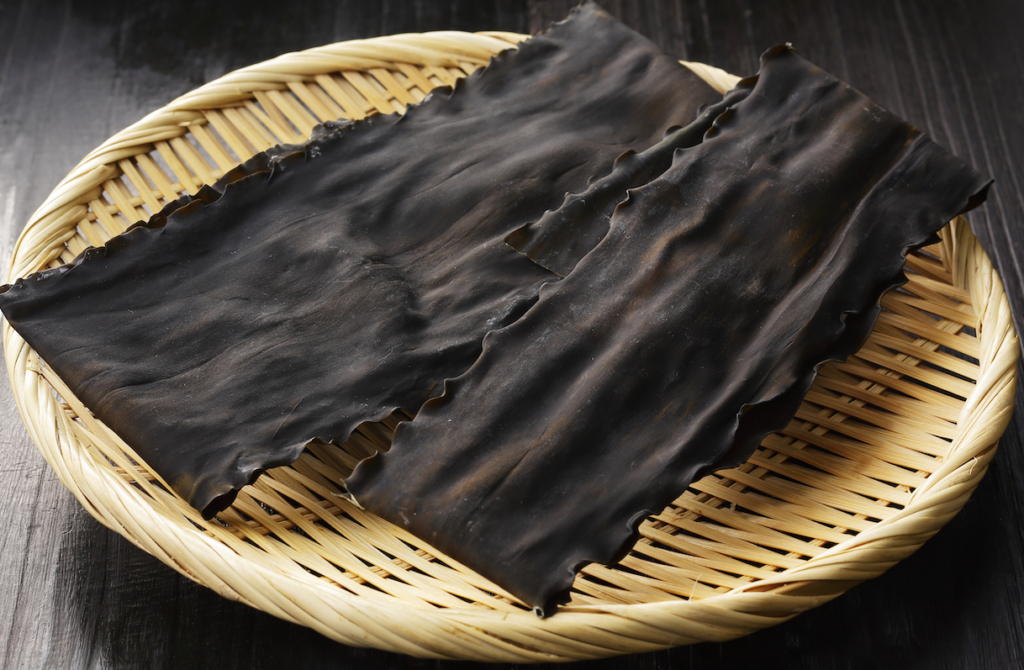
Hidaka Kombu
Hidaka Kombu can be found in general everyday cooking, or in commercial onigiri fillings. This ingredient is often found in dishes such as miso soup, simmered soup stock, oden ingredients and kombu rolls.
- Taste profile: Mellow flavor
- Umami content: 1344mg/100g (*)
- Texture after boiling: Soft after boiled
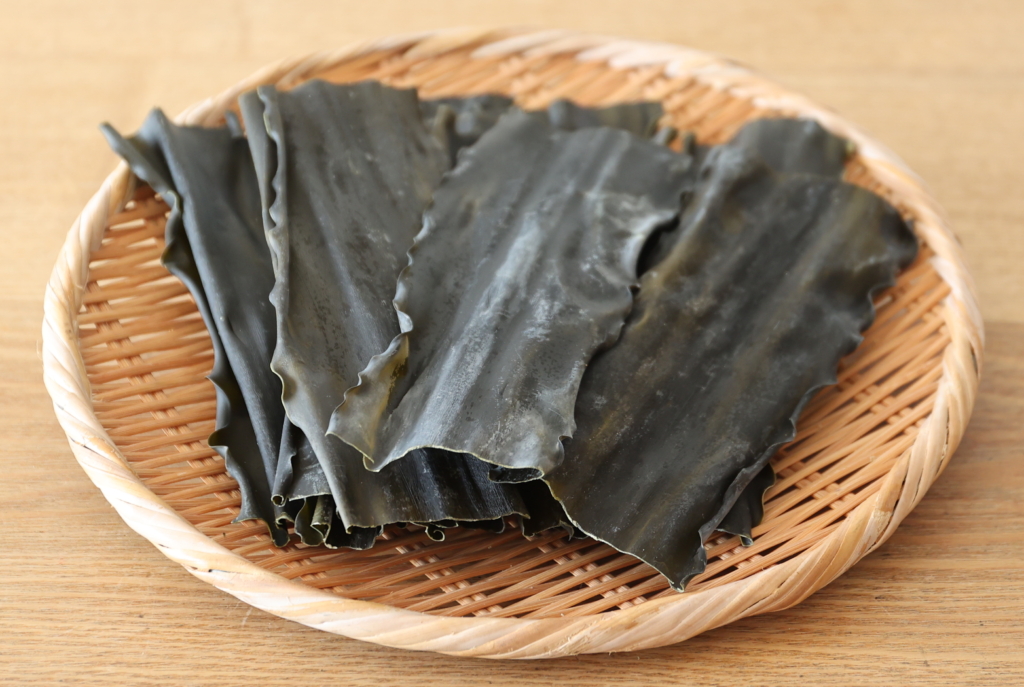
Rishiri Kombu
Rishiri Kombu is often used in restaurant cooking and vegetarian food. Some of its main uses include suimono (clear soup), yudofu (boiled tofu), soup stock and kelp water.
- Taste profile: Clear broth, no particular distinctive taste
- Umami content: 1985mg/100g (*)
- Texture after boiling: Hard
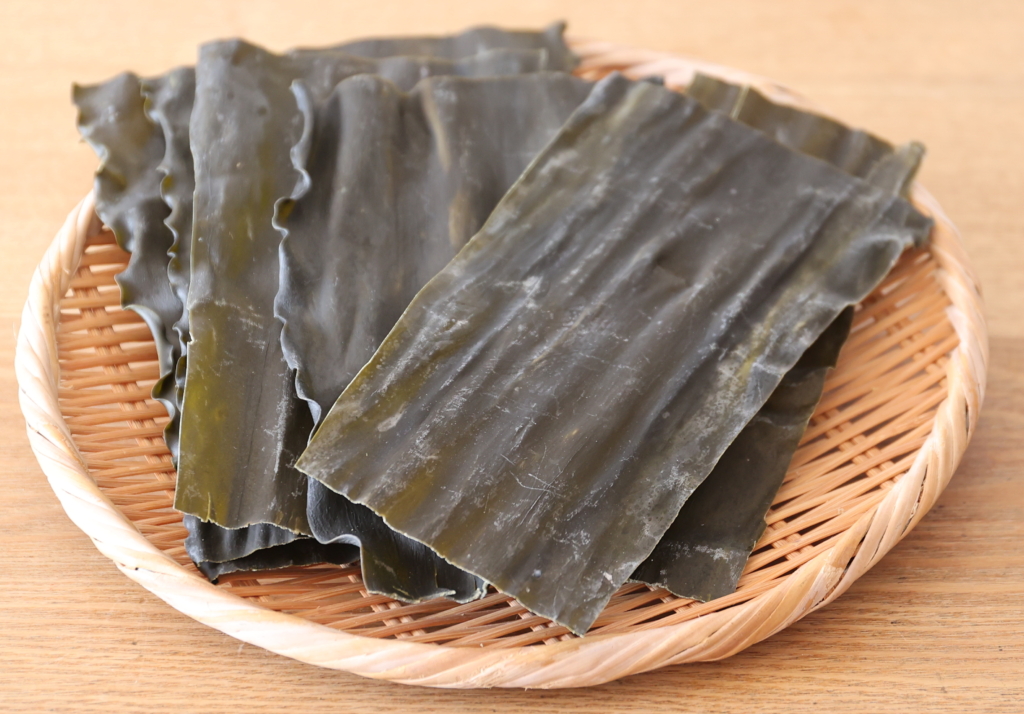
Rausu Kombu
Rausu Kombu is considered for highest grade cooking, reserving only for special occasions. It is mainly used for making stock for hot pot, soup stock, salt ramen, kelp water and kobujime (a technique of preserving fish between kombu sheets).
- Taste profile: Prominent in colour, flavour and smell
- Umami content: 2286mg/100g (*)
- Texture after boiling: Easily dissolvable
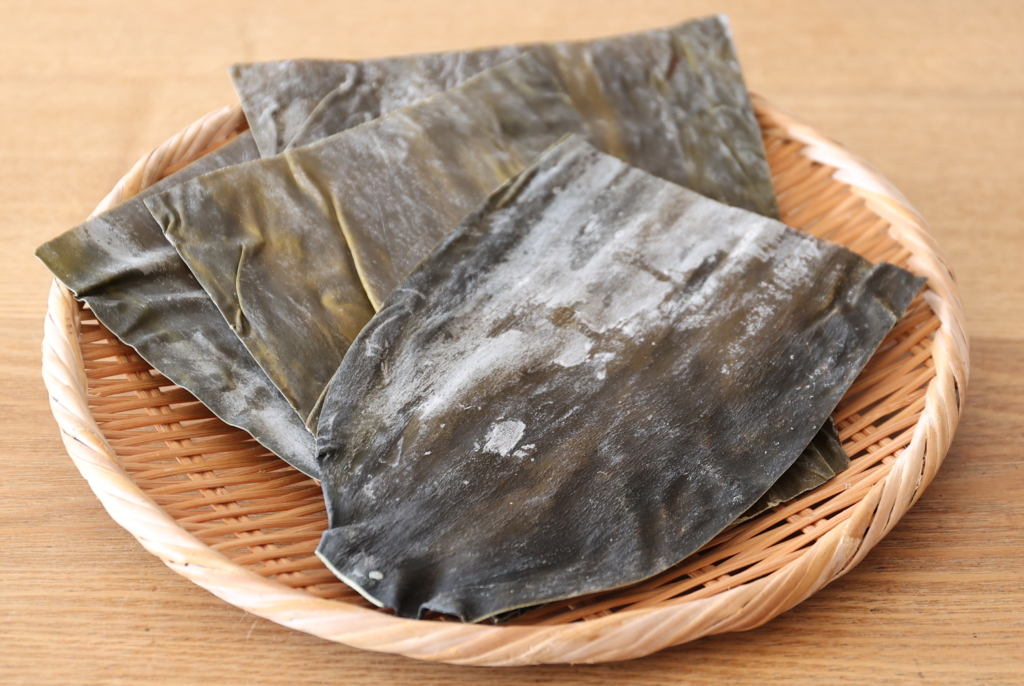
Reference:(*) NPO Umami Information Center
How to Distinguish High-Quality from Bad-Quality Kombu?
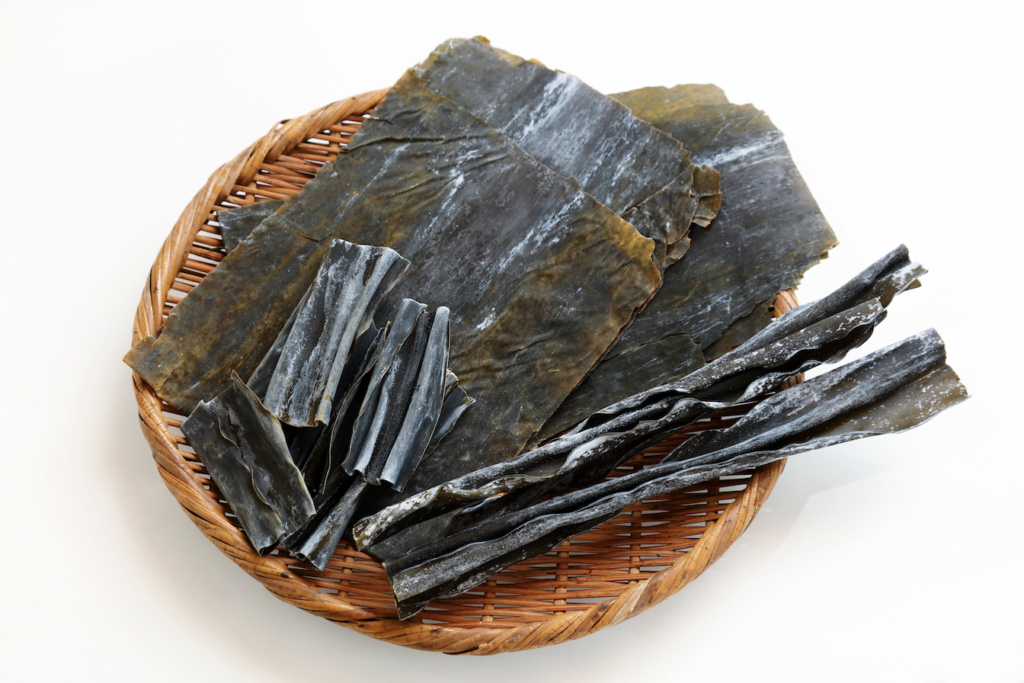
In order to enjoy all the health benefits and optimal flavour of Kombu, it is important for you to know how to identify high-quality Kombu. The picture above shows an example of what it should look like. We will share with you some of our tips below:
1. Look for minimally processed Kombu
For most types of Kombu, they will be harvested, cleansed gently to remove sand and dried to be packaged. Some Kombu might need to undergo a maturation process (kuragakoi) to remove the heavy seaweed odour but in general, Kombu should not be heavily processed with any harsh chemicals.
2. Have a relatively smooth surface, without excessive holes, spots and bumps
The surface of the Kombu should be fairly smooth and consistent, free of scars like holes, spots and bumps.
3. Free of dirt and excessive amount of sands
High-quality Kombu should be harvested from clean water so it should not have any dirt and excessive sand residues.
4. Still have some white-powdery deposit
The white powdery deposit is known as mannitol, which is responsible for creating that unique umami flavour. High-quality Kombu would have a high amount of this white deposit on the leaves.
5. Should have greenish-brown colour
Although the colours do vary between different Kombu varieties and it is difficult to say exactly what the colour should be, it should generally vary between different shades of green to black.
Ways to Use Kombu
How to Make Kombu Dashi
With Kombu, it is essential we learn how to make dashi. Making dashi is very simple, yet dashi is a key and critical ingredient in many Japanese dishes that cannot be missed! There are 2 ways to make dashi, either by a hot brew or a cold brew. Please refer to the recipe below to learn how to do this!
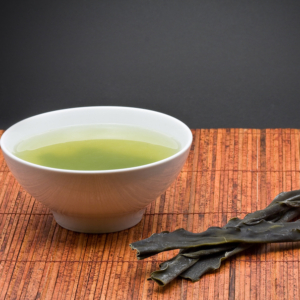
Warm & Cozy Kombu Chicken Soup
With this broth, you can go ahead and make any dishes ranging from a delicious bowl of ramen to a flavourful hot bowl of soup. Today, let’s make a Kombu Chicken Soup!
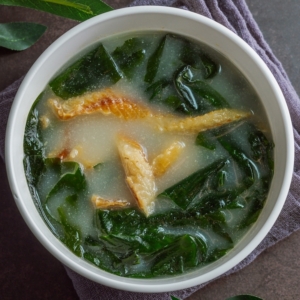
Easy & Simple Kombu Tsukudani
If you’re wondering what to do with the leftover Kombu used to make the broth, this next recipe will be just the right recipe for you. Here, we are making a type of seasoning called Tsukudani, which is delightful when eaten with rice. You should totally give this a try.
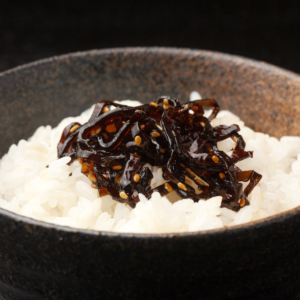
Apart from some of the recipes mentioned here, you can also make other types of dishes such as tofu and egg soup, ramen, chicken hot pot, and different types of drinks such as kombu tea. Since there are so many delicious recipes specifically made for each type of kombu depending on their texture and flavour, please visit our product page for Hidaka, Rishiri and Rausu kombu to find out more!
Nutritional Values
Kombu kelp is known as the strongest alkaline food. It contains many vital nutrients to help our body be strong and healthy. Kombu specifically contains a high amount of antioxidants, a rich source of vitamins, minerals, and iodine, and a great source of omega-3 fatty acids as well as fibres. For this reason, kombu is one of the most popular seaweed used in a variety of cuisines.
Let’s take the example of Hidaka kombu. For each sheet containing 10g of kombu, it has 15 calories. Due to its extremely low fat and cholesterol nature & high volume of fibre, it is considered to have an anti-obesity effect on the body. Furthermore, there has been research done to show that the fucoxanthin substance in seaweed may help to control your blood sugar.
Reference: Phenolic Compounds from Edible Algae: Bioactivity and Health Benefits
5 Health Benefits of Kombu
Benefit #1: Strong bones and teeth
Seaweed is an incredible source of vitamins and minerals such as calcium. The amount of calcium contained in kombu is 6 times that of milk. Furthermore, it is known that calcium in seaweed is of higher quality and much easier to absorb than diary products.
According to a study on the nutritional effect of seaweed, calcium accumulates in seaweeds is also much higher than terrestrial food products. They are also high in Vitamin D, which aids the absorption of calcium for your bones and teeth.
Reference: Nutritional Values of Edible Seaweed

Benefit #2: Glowing skin and smooth hair
With a high concentration of Vitamin B2, kombu will help you maintain strong skin and hair. It is also rich in antioxidants, which have anti-aging properties! By helping to stimulate the cell turnover and increase the elasticity and suppleness of the skin, it will help to reduce facial wrinkles. Additionally, it also has a softening and moisturising effect on your hair.
Reference: Diverse Applications of Algae

Benefit #3: Easy digestion
Did you know that kombu contains about 5 times of dietary fiber as burdock? As kombu is an incredible source of probiotics and both soluble and insoluble dietary fibers, it will aid your digestion.
Probiotics help to improve your gut health by restoring your gut flora! Additionally, fibers support digestive transit and reduce colon transits time, keeping your colon healthy and potentially reducing the risks of colon cancer. Please refer to this study for more details.
Reference: Nutritional Values of Edible Seaweed

Benefit #4: Support cardiovascular health
Since kombu contains low calories due to its low fat and cholesterol content, seaweed consumption can reduce cholesterol in the blood and reduce the risk of a cardiovascular attack.

Benefit #5: Strong eyes and immunity
As kombu is highly nutritious and provides a balanced diet with a vast range of nutritions, it will contribute to maintaining the overall health of your immunity, making you feel stronger. As seaweed contains a high amount of vitamins, it also protects your vision.

Is Kombu toxic?
While kombu is not toxic, over-consuming kombu could lead to abnormal thyroid function in the long-term for people, and especially for individuals with underlying thyroid disorders. This is due to its growing method of being in deeper water, making it naturally contain a very high concentration of iodine. Therefore, it is recommended to boil kombu in water for 15-30 minutes to reduce its iodine concentration. This means that processed and cooked seaweed usually do not carry a significant amount of iodine to pose health risks, so you shouldn’t be worried when consuming them! Also, as a safety reminder, please remember to read the instructions on the packaging to know the recommended intake!
Where to Buy Kombu?
You should be able to find kombu in any Japanese or Asian supermarket. Some other supermarkets like Whole Foods and Walmart also carry kombu in the Asian/International food aisle or more specifically, look for the dried seaweed aisle. You could also purchase kombu from here that delivers internationally!
Kombu FAQs
- What is the white powder on my Kombu?
-
That is not mold or dirt, but this powder is known as mannitol that gives the kombu that umami flavour.
- How should I clean my Kombu for cooking?
-
Kombu is generally clean so it is not necessary for you to rinse it in running water at home. This will strip off the white powder and lose the umami flavour. Instead, please use a damped cloth to gently wipe it.
- Does Kombu have a fishy smell?
-
Even though it comes from the sea, it does not have a strong, fishy odour.
- What is the difference between Kombu and Nori?
-
Nori is a red-algae seaweed, whereas kombu belongs to the brown algae family. Nori has a lighter colour and is much more delicate than kombu, therefore it is often used for sushi wrapping. Kombu, on the other hand, has a darker colour and thicker leaves, therefore much more suitable to make dashi.
Please click here to read more about Nori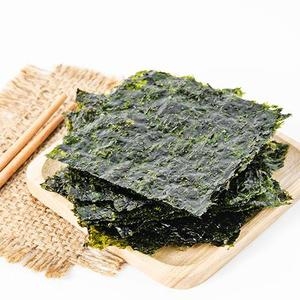 What is Nori and The Must-Try Nori Recipes Nori, the delicious dark-green sheets of edible seaweed that often wrapped around your sushi. Nori has rich natural umami flavor from the seaweed, eve...
What is Nori and The Must-Try Nori Recipes Nori, the delicious dark-green sheets of edible seaweed that often wrapped around your sushi. Nori has rich natural umami flavor from the seaweed, eve...
Recommended Products
Buy On Amazon USA
Buy On Kawashimaya Website

